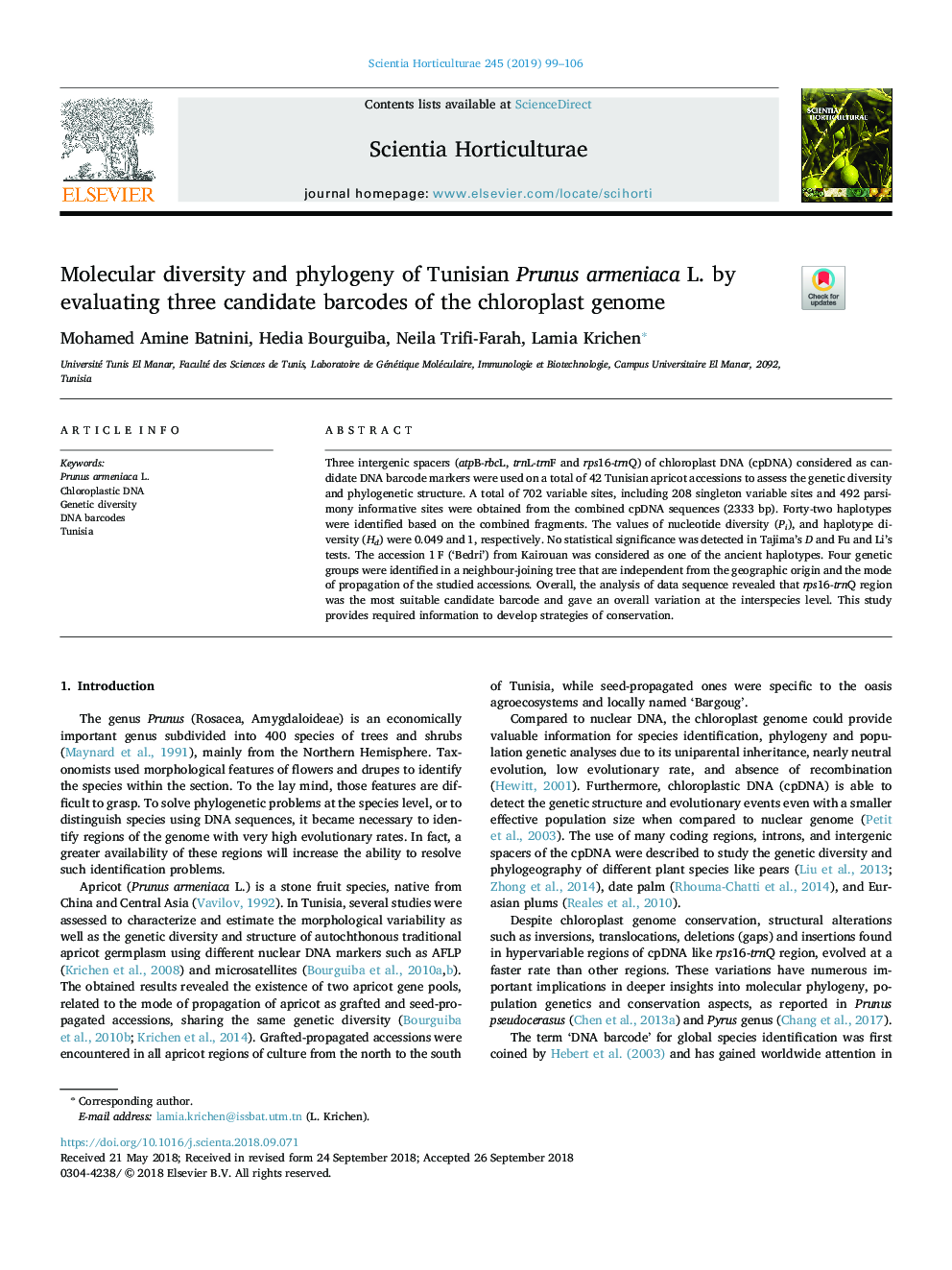| Article ID | Journal | Published Year | Pages | File Type |
|---|---|---|---|---|
| 11262728 | Scientia Horticulturae | 2019 | 8 Pages |
Abstract
Three intergenic spacers (atpB-rbcL, trnL-trnF and rps16-trnQ) of chloroplast DNA (cpDNA) considered as candidate DNA barcode markers were used on a total of 42 Tunisian apricot accessions to assess the genetic diversity and phylogenetic structure. A total of 702 variable sites, including 208 singleton variable sites and 492 parsimony informative sites were obtained from the combined cpDNA sequences (2333 bp). Forty-two haplotypes were identified based on the combined fragments. The values of nucleotide diversity (Pi), and haplotype diversity (Hd) were 0.049 and 1, respectively. No statistical significance was detected in Tajima's D and Fu and Li's tests. The accession 1âF ('Bedri') from Kairouan was considered as one of the ancient haplotypes. Four genetic groups were identified in a neighbour-joining tree that are independent from the geographic origin and the mode of propagation of the studied accessions. Overall, the analysis of data sequence revealed that rps16-trnQ region was the most suitable candidate barcode and gave an overall variation at the interspecies level. This study provides required information to develop strategies of conservation.
Related Topics
Life Sciences
Agricultural and Biological Sciences
Horticulture
Authors
Mohamed Amine Batnini, Hedia Bourguiba, Neila Trifi-Farah, Lamia Krichen,
